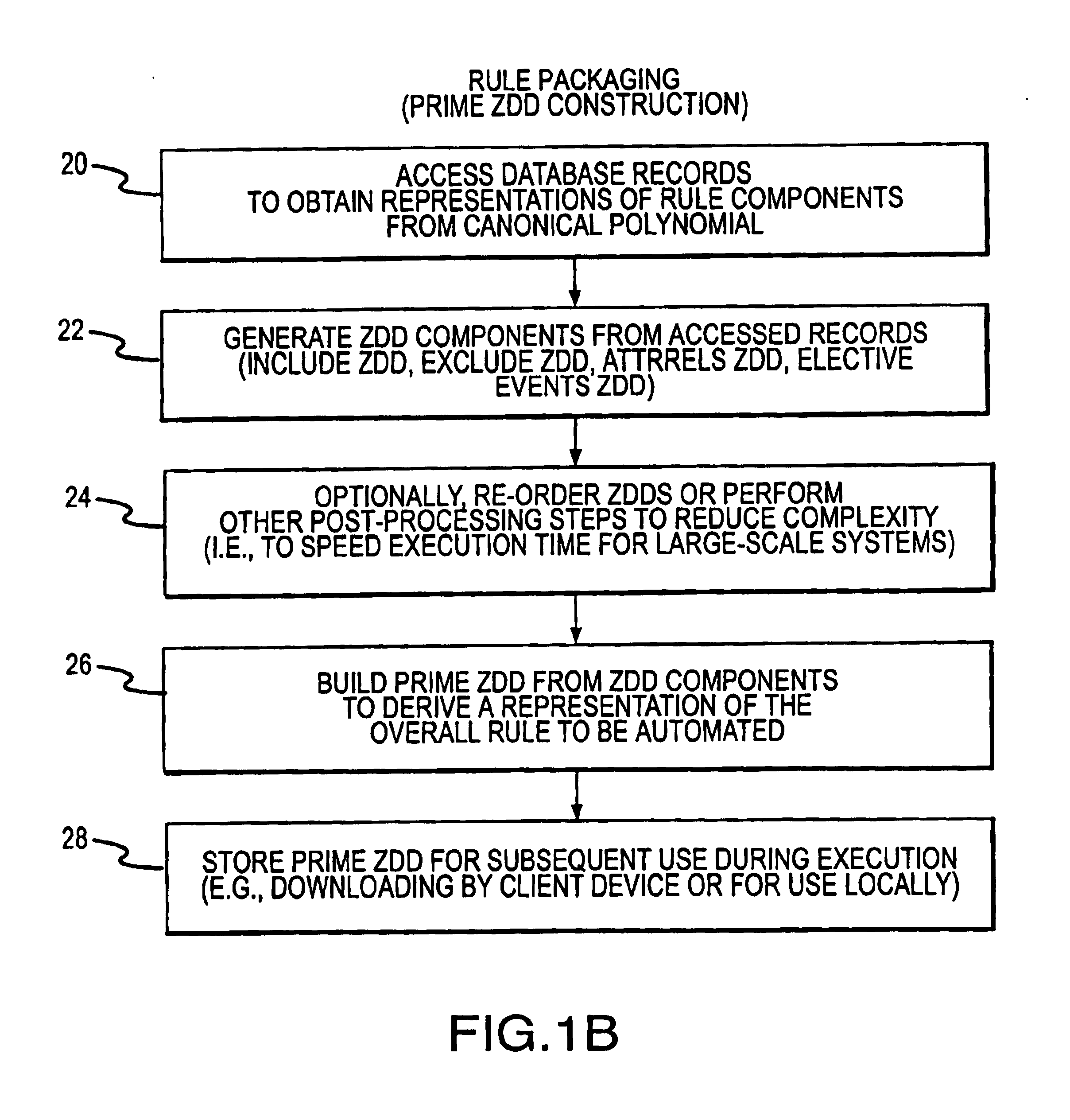Rule processing methods for automating a decision and assessing satisfiability of rule-based decision diagrams
a decision diagram and rule processing technology, applied in the field of decision automation or rule processing, can solve the problems of unacceptable run times of many prior decision automation systems, many challenges in model checking for formal verification of commercial software, and virtually impossible to process within acceptable time limits, etc., to achieve the effect of exceeding the computational capacity of present-day computing systems
- Summary
- Abstract
- Description
- Claims
- Application Information
AI Technical Summary
Benefits of technology
Problems solved by technology
Method used
Image
Examples
Embodiment Construction
[0042]FIG. 1A shows a preferred rule entry or maintenance procedure according to one aspect of the invention. The procedure begins at step 10 by a subject matter expert identifying and defining applicable rules expressed in propositional logic. Rules generally include attributes or properties, enumerations or values of such attributes and properties, as well as relationships between and among those attributes and properties. Variables characterizing rules are generally referred to as rule parameters. In the preferred method, multiple sets of relational diagrams, e.g., smaller or single-dimensional rules, are created at step 12 to express rule components in propositional logic form, e.g., a conjunctive or disjunctive normal form. A complex or prime rule to be automated includes multiple rule components. Smaller rules or rule components are factored from a larger, complex multi-dimensional rule in a sum-of-products (i.e., include rule) form or a product of sum-of-products (i.e., exclu...
PUM
 Login to View More
Login to View More Abstract
Description
Claims
Application Information
 Login to View More
Login to View More - R&D
- Intellectual Property
- Life Sciences
- Materials
- Tech Scout
- Unparalleled Data Quality
- Higher Quality Content
- 60% Fewer Hallucinations
Browse by: Latest US Patents, China's latest patents, Technical Efficacy Thesaurus, Application Domain, Technology Topic, Popular Technical Reports.
© 2025 PatSnap. All rights reserved.Legal|Privacy policy|Modern Slavery Act Transparency Statement|Sitemap|About US| Contact US: help@patsnap.com



